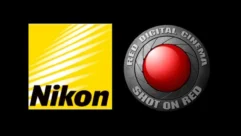

Parsing the Red Ink
As I write this, it’s that time of year when major display manufacturers release their quarterly earnings statements. Based on what I’ve seen, things aren’t looking too rosy.
Pete Putman, CTS, ISF
AS I WRITE THIS, IT’S THAT TIME OF YEAR WHEN MAJOR display manufacturers release their quarterly earnings statements. Based on what I’ve seen, things aren’t looking too rosy. According to reports from Insight Media’s “Display Daily,” TWICE, and financial results posted online, everyone seems to be struggling to make a buck with flat-panel and projection products. In some cases, the drag on earnings is due to losses in unrelated product lines. In other cases, rapid drops in pricing and margins are to blame.
Let’s start with a projector business. InFocus, which most readers will remember as the former king of business projection, reported a mixed bag for the second quarter of 2008. While the company’s total revenues ($72.7 million) were up 19 percent from Q1 2008, they declined 1 percent from Q2 2007. Overall, the company lost $3.8 million in the second quarter, better than its $7.8 million loss a year ago, but $2 million more than its Q1 2008 loss.
Digging deeper, we see that InFocus’ projector shipments were up 33 percent from Q1 2008 at 92,000 units, which also represents an increase of 26 percent over Q2 2007. Unfortunately, average selling prices dropped 11 percent from Q1 2008, and gross margins dropped 2.2 percent. In other words, InFocus shipped more projectors in Q2 2008, but made less money on each sale.
The size of a company is no defense against a bad financial quarter, either. Sony recently predicted its LCD TV business would be the world’s largest within three years, and that Blu-ray–related products and businesses would hit the $10 billion mark by 2011. They’d better hope so, because overall profits for Q2 2008 dropped 47 percent even as shipments of Bravia LCD TVs increased. The culprit? Slowing sales of cell phones and cameras.
Samsung’s LCD sales jumped 41 percent year-to-year in the second quarter of 2008, which sounds fantastic until you hear the rest of the numbers: A modest 2 percent increase in profits, mostly due to lower operating costs. For other manufacturers, it’s been mostly a case of not-as-bad-as-last-year. Pioneer, which has nearly drowned in red ink since 2005, reported a net loss of $73.1 million and a drop in revenue of $11.9 million for its first fiscal quarter of 2008. (Most Asian manufacturers start their fiscal years in April.) The causes? A decline in home electronics sales of 17.4 percent year-to-year, due mostly to lower sales of plasma TVs. DVD drives and recorders also shouldered some of the blame.
Apparently Matsushita holds the formula for success, as its Q1 2008 profit came to $682 million, almost doubling its Q1 2007 results. This jump was attributable to sales of everything from plasma TVs to DVD recorders. Ironically, plasma—which many analysts view as a losing proposition—accounted for a 16 percent increase in sales for the company’s Panasonic brand (so there!).
LCD behemoth LG Display also had better news to report, increasing sales by 4 percent from Q1 2008, although the company’s operating profit and net income were up only fractionally. Back in Japan, Sharp’s revenue dropped 6 percent, yet they managed to increase profits by 2.8 percent. That’s because the company was able to offset a 17.8 percent fall-off in sales of audio and video products with an increase of 24 percent in sales of LCD components.
WHAT IT ALL MEANS
None of the struggling companies mentioned are in any real danger of going out of business. Most are in a good position to absorb financial losses as long as the red ink doesn’t keep flowing. The real challenge is to remain profitable in professional and industrial AV markets. That was easy to do a decade ago when projectors sold in the high four figures, plasma monitors started at 10 grand, and large LCD displays were still lab experiments. Today? Pro AV markets have taken a back seat to consumer sales, and for good reason: Economies of scale.
To be a player in display technology (particularly plasma and LCD), you need to manufacture enormous quantities of product every month, far more than the professional world can absorb. So the emphasis has shifted toward selling into big-box stores, such as Best Buy, which reportedly sells one out of every four flat-panel TVs these days.
While mass production has resulted in much lower prices for display technology, it also puts profitability at the mercy of discretionary income. Current economic woes in the United States have resulted in a shift in buying patterns. A substantial number of consumers have downsized their purchases of new LCD and plasma TVs, favoring 32- and 37-inch models over 50-inch and larger offerings. They want that new HDTV, but aren’t willing to pay nearly as much for it. Moreover, the end of the blue-laser wars hasn’t resulted in a gusher of sales of Blu-ray players. Sales of conventional red-laser players still outstrip their blue counterparts 4 to 1, primarily because of their much lower cost and the fact that most consumers don’t see any real improvement in picture quality by moving to blue-laser DVDs.
Manufacturers are also getting hammered by higher oil prices, which translate into higher prices for everything plastic in a new HDTV, including the housing and screen. Not surprisingly, shipping and other transportation costs have also risen with the cost of oil. But manufacturers can’t just pass along these extra costs to customers, who (along with PRO AV readers) have grown comfortable with the slow and steady erosion of street prices.
Long term, some of these companies will have to change their business models dramatically, consider merging or consolidating operations with former rivals, or exit the business altogether. Samsung’s recent moves to spin off its unprofitable plasma business into its consumer electronics division might look good on paper, but there’s a chance it might turn out to be little more than rearranging deck chairs on a sinking ship.
Pioneer announced last March that it was getting out of the plasma manufacturing business altogether, outsourcing that function to Matsushita and concentrating on marketing and sales of its KURO monitors and HDTVs. Hitachi, which has been struggling with declining market share, will probably be the next to exit PDPs, likely concentrating on LCD display technology going forward.
One thing’s certain: AV integrators are sitting in the catbird seat when it comes to wheeling and dealing, particularly on volume purchases of projectors and/or monitors. Based on InfoComm 2008 analysis, prices are continuing to fall on a broad range of display products and interfaces, independent of market conditions. And one man’s red ink is another man’s black ink.
InfoComm Educator of the Year Pete Putman is a PRO AV contributing editor and president of ROAM Consulting in Doylestown, Pa.










